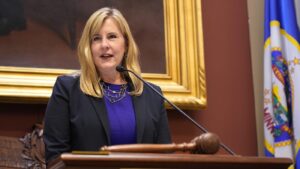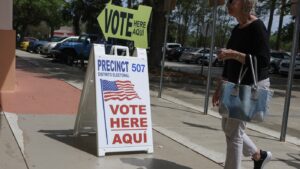Supreme Court Eases Path for Students with Disabilities to Enforce Their Rights
In a significant decision, the Supreme Court has made it more straightforward for students with disabilities to pursue legal action to enforce their rights under the Americans with Disabilities Act (ADA) and other related laws. This ruling aims to ensure that students with disabilities receive appropriate educational accommodations.
The ruling, delivered in a unanimous opinion authored by Chief Justice John Roberts, was supported by separate concurring opinions from Justices Clarence Thomas and Sonia Sotomayor, each joined by Justices Brett Kavanaugh and Ketanji Brown Jackson, respectively.
The case centered around Ava Tharpe, a teenager with severe disabilities due to a rare form of epilepsy. Tharpe’s condition necessitates significant assistance with daily activities, and she experiences frequent seizures, particularly in the mornings. To accommodate her needs, her school in Kentucky had arranged for an afternoon schedule, including home instruction by a teacher in the early evening.
However, upon relocating to Minnesota for her father’s job, Tharpe’s new school in the Twin Cities denied her request for a similar schedule adjustment. As a result, she received only 65% of the class time compared to her peers.
Tharpe’s family initiated a lawsuit against the Osseo Area Schools under the ADA, the Individuals with Disabilities Education Act (IDEA), and the Rehabilitation Act. These laws require federally funded schools to provide reasonable accommodations for students with disabilities.
An administrative law judge in the state ruled in favor of the Tharpes, determining that the school district had violated her rights and needed to compensate for the lost class time with 495 additional instructional hours. After prolonged legal battles, the district complied.
Subsequently, the Tharpe family sought compensatory damages for expenses incurred on external specialists and teachers before the school district’s compliance. While IDEA does not allow for monetary damages, the ADA and Rehabilitation Act do.
The Eighth Circuit Court of Appeals had previously dismissed the Tharpes’ claims for financial compensation, citing the need for evidence that school officials acted with “bad faith” or “gross misjudgment.” This requirement presents a higher standard than other discrimination claims. However, the Supreme Court’s ruling lowered the burden for students seeking to vindicate their rights, siding with Tharpe and her parents.
For more details, read the full article on NPR’s website.
This article was originally written by www.npr.org







Be First to Comment